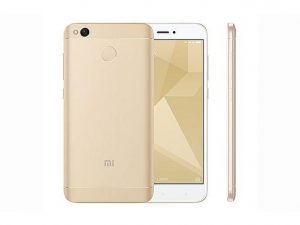Xiaomi India’s recently launched Xiaomi Redmi Y1 is a selfie-centric smartphone, which has a lot to offer at the price tag which has been offered. Here are few things to look for before making your choice between these two smartphones (Xiaomi Redmi 4 and Xiaomi Redmi Y1). So, let’s look at the factors that can give you the best option in the budget segment.
Price: Xiaomi Redmi Y1 is priced at ₹8,999 for the 3 GB RAM and 32 GB storage option and ₹10,999 for the 4 GB RAM and 64 GB onboard flash storage model. On the other hand, the Xiaomi Redmi 4 is priced at ₹8,999 and ₹10,999 for the 3 GB and 32 GB with 4 GB and 64 GB storage models. So, both devices are priced at a similar price tag and offer almost the same specifications (with few minor changes).
Design: The Xiaomi Redmi 4 offers a full metal unibody design with a plastic top and bottom back network antenna parts, however, the design is on par with the Xiaomi Redmi Note 4, Lenovo K8 Note, and other mid-tier Android smartphones. The Xiaomi Y1 offers plastic unibody design with the metal finish on the top, as plastic does feel cheap and the colour from the back of the phone might scrape off in few months of continues usage. So, if you are looking for a long lasting design with a premium feel, then go with the Xiaomi Redmi 4, however, if you like a lightweight smartphone, then go with the Xiaomi Redmi Y1.
Display: The Xiaomi Redmi Y1 offers a 5.5-inch IPS LCD HD display protected by 2.5D curved Corning Gorilla Glass on the top, as the device offers a 720p panel, this device might not be great for the viewing HD content as it offers less than 250 pixels per inch. The Xiaomi Redmi 4 offers a similar 720p IPS LCD screen, however, instead of the 5.5-inch screen the device offers a 5.0-inch compact display with 2.5D curved tempered glass on the top. So, if you are into a compact smartphone, then go with the Redmi 4 or Redmi y1 could be a great choice with a larger screen.
Connectivity: Both smartphones offer dual SIM card slots with 4G LTE and VoLte capability, however, there is a small twist in the tale. The Xiaomi Redmi 4 offers a Hybrid SIM slot, which means has to compromise with either 2 SIM card or a SIM and an SD card. However, for the first time, the company has engineered a new SIM tray with two nano-SIM card slots and an SD card slot. So, for those who store a lot of data on their SD card going with the Redmi Y1 will make all the sense.
Hardware: In terms of hardware capability, both devices are powered by the same Qualcomm Snapdragon 435 Octa-core SoC, paired with 3 GB or 4 GB RAM with 32 GB or 64 GB onboard flash storage. So, in terms of performance, both devices offer similar performance in all the conditions. So, choosing any model from Xiaomi will make any difference what so ever.
Camera: To start with the Xiaomi Redmi 4, the device offers a 13 MP rear-facing camera with 1080p video recording capability with PDAF and beauty mode out of the box. For the selfie enthusiasts, the device offers a 5 MP selfie shooter with 720p video recording capability. The Xiaomi Redmi Y1 offers similar 13 MP rear-facing camera with PDAF and 1080p video recording capability, however, for the selfie camera, the company has stepped up the game to the next level by using a 16 MP front-facing selfie shooter with a dedicated flash unit. So, if you are selfie freak (the USP of Redmi Y1) then, go with the Redmi Y1 without thinking twice.
Battery: The Xiaomi Redmi 4 offers a massive 4100 mAh Li-ion battery with normal charging capability with reverse charging (can be used as power bank), so, the battery can really last longer than any of the competitive smartphone. The Xiaomi Redmi Y1 offers slightly smaller 3080 mAh Li-ion battery with normal charging capability with no reverse charging feature. Clearly, the Redmi 4 is a true winner in all the aspects.
Conclusion: Both models has its own ups and downs. If you are into the premium metal body, with compact screen and massive battery go with the Xiaomi Redmi 4. If your main concern is selfie camera with a dedicated SD card slot, then go with the Xiaomi Redmi Y1.
Which one among the list is your choice? Share your views in the comments below about the Xiaomi Redmi Y1? Is this smartphone even necessary in India?

